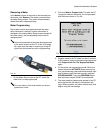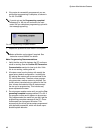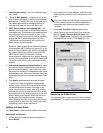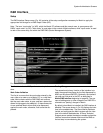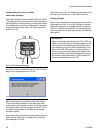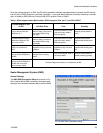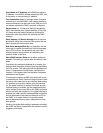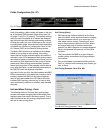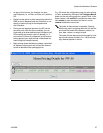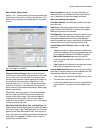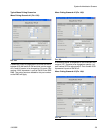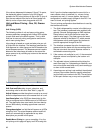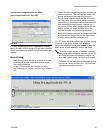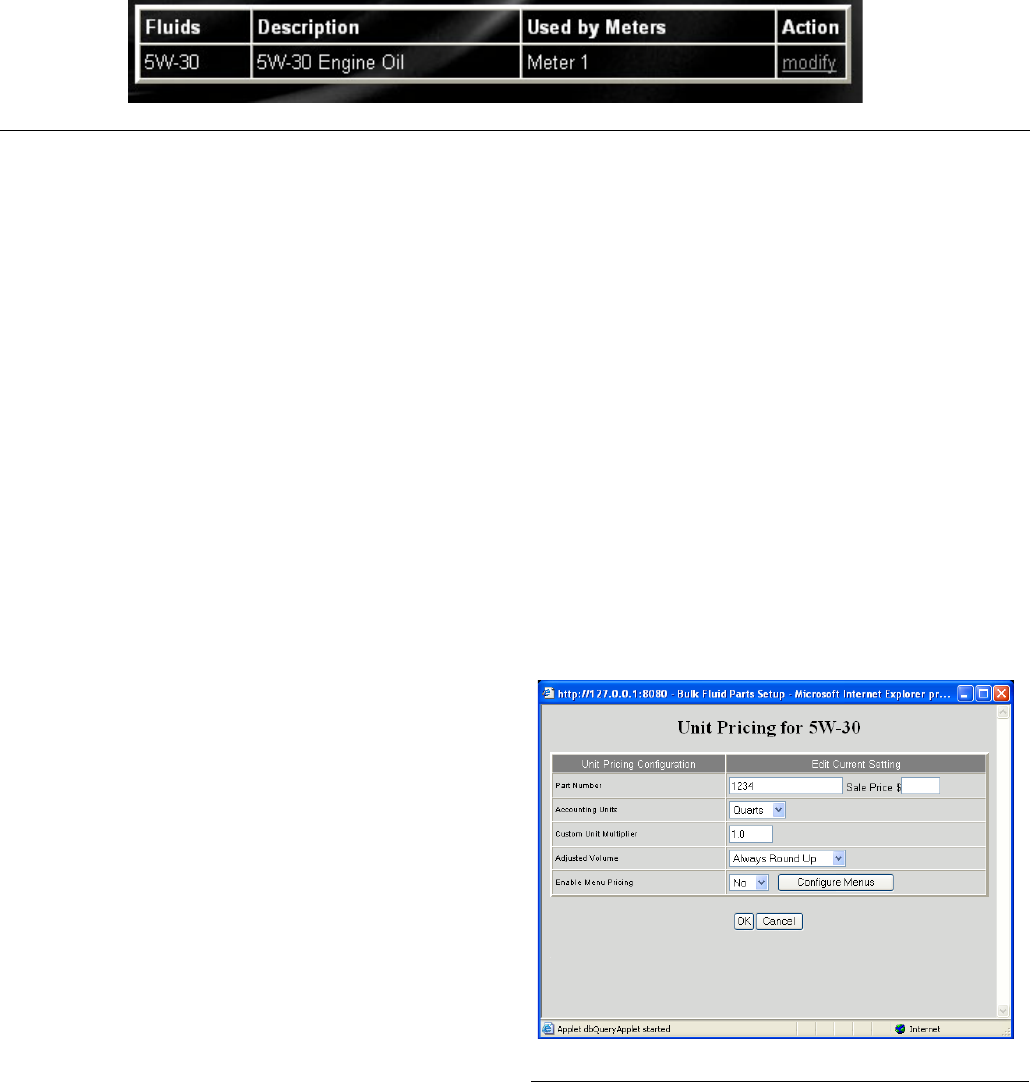
System Administrator Screens
312353B 55
Fluids Configuration (FIG. 97)
Each fluid used by a Matrix meter will appear in the cen-
ter of the Matrix R&R Interface Setup screen (see F
IG.
93, page 51 and F
IG. 97 [above]). The interface configu-
ration for each fluid applies to all meters that dispense
that fluid and have their interface state setting enabled.
Clicking the modify link for a fluid brings up the unit pric-
ing configuration page, whose content varies depending
on whether the interface is configured for Parts or Gas,
Oil, Grease (GOG) on the General Settings screen.
The Matrix R&R Interface can calculate a fluid charge
based on unit pricing or menu pricing. Unit pricing
means that the charge is determined by the number of
volumetric units of fluid dispensed. Menu pricing means
the charge is based on meeting certain criteria, such as
the volume of fluid dispensed and the timing of the dis-
pense event. Menu pricing accommodates “specials”,
where the fluid and an oil filter together need to add up
to an advertised price, as well as adding other parts to
the R&R RO when the dispense completes.
Any parts, fluid or non-fluid, that Matrix adds to and R&R
RO are accounted for in the dealership inventory; that is,
inventory levels within R&R will be reduced appropri-
ately for each part added to the RO. Matrix will never
increase R&R inventory amounts (e.g. a fresh oil ship-
ment is delivered); additions to inventory must handled
manually.
Unit and Menu Pricing - Parts
The following outline of unit and menu pricing setup
screens used when managing bulk fluid through Parts
applies to each fluid used in the Matrix system. That is,
each fluid has its own unit pricing configuration and its
own set of menu pricing items.
Unit Pricing (Parts)
• R&R cannot use fractional amounts on the Parts
side of the DMS, so the interface allows for rounding
the exact dispense amount up or down into a bill-
able whole number amount. Rounding will occur
only for the purposes of billing for the fluid. Matrix
will always keep track of the exact amount dis-
pensed. Use Matrix Reporter to compare dispense
history of dispensed fluid amounts vs. billed fluid
amounts.
• The pricing within the DMS for a given fluid part
number can be overwritten with pricing entered in
the interface.
• Can accommodate unconventional billing units for
fluid (i.e., tenths of units instead of pints, quarts, gal-
lons, or liters).
Unit Pricing Example - Parts (F
IG. 98):
F
IG. 97 Fluids Configuration
FIG. 98 Unit Pricing Example - Parts



